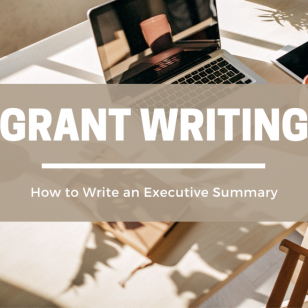By Kelsey Boudin
President and Founder, Southern Tier Communications Strategies, LLC
This is arguably the biggest and most important element or your entire funding proposal: the grant narrative. Your organization has likely spent weeks or months in plan development. You may have even submitted a letter of intent and been invited to submit a full proposal. So now it’s time to verbalize exactly what you plan to do, why and how.
Is your organization seeking its next round of core funding to support general operations over the next three years? Your grant narrative then must spell out exactly what those general operations will be. Does your private parochial school need new tech devices in the hands of each student to implement a new-age curriculum? Then indicate in your narrative what those devices will be, why they’re the best for the job, how they’ll fit within the curriculum and, of course, the expected positive outcomes.
Luckily, many private foundations in the digital age use an online portal to guide applications. These often feature specific questions in a required format, usually with word or character counts. Government funders often channel proposals through their own encrypted portals like Grants.gov, NYS Grants Gateway, or one specific to your state or territory. You’ll likely have a very detailed request for proposals (RFP) detailing narrative requirements.
In any case, most grant narratives require similar categories of information.
7 Basic Elements of a Grant Narrative
1. Organizational Description and History
Funders fund good or great organizations. They lean toward those with the greatest capacities to grow community good with their investment.
Your grant narrative must include an introductory section about you with information like:
- Name
- Location
- Tax-exempt status
- Mission and vision statements
- Longevity statement
It’s a snapshot of who you are and your eligibility. Most funders will support initiatives only by a 501(c)(3) nonprofit organization, charity or other tax-exempt entity like benevolent church society. But most importantly, this section introduces the funder to what you stand for and how long you’ve been successfully doing it.
Like anything else, successful track records inspire confidence in the supporter’s investment.
2. Executive Summary
Some RFPs formally require an executive summary. Others don’t. Regardless, a strong grant proposal should include an executive summary, essentially an introductory synopsis.
This is the view from 30,000 feet. It walks the reviewer through a general understanding of the proposal, its priorities and overarching goal, and benefits the investment will yield. Written correctly, the executive summary should illustrate key points and connect them directly to the funder’s mission.
For example, if a funder prioritizes afterschool programs for inner-city youth, your executive summary should align the project’s objectives with that goal.
And, for Heaven’s sake, don’t be shy about your grant ask. Be honest and upfront about the financials as close to the lead as possible. After all, grantmakers correlate dollars and cents to potential impact.
3. Needs Statement
Funders understand there are needs everywhere. In the world of nonprofits and charities, impoverished people need services and resources and organizations need funding to provide them. But there’s only so much funding to go around.
Describe the community need. Tie it directly to data. The funder needs to know your area has a 33 percent poverty rate or crime recidivism rate three times the national average.
Likewise, funders understand nonprofits rely upon grants to fulfill their missions. But some nonprofits have more funding sitting in a rainy-day fund while others have submitted six-straight unsuccessful grant proposals.
Gauging these needs prioritizes some realities over others and, once again, justifies the investment.
4. Program Goals
You’re now getting into the meat of your proposal. This section must reiterate the proposal’s overarching goal and detail the specific objectives required for success. If there’s a process to achieving objectives, go into as much detail as possible (within the space allotted).
If the grant would hire a part-time marketing assistant, indicate, in order, the process to onboard that individual. Ex.)
- Develop the job description and an internal description of the ideal candidate
- Advertise the position on Indeed, LinkedIn and Facebook, as well as local print media
- Review applications and resume submissions
- First-round interviews followed by internal meeting to narrow the list to five strong candidates
- Second-round interviews followed by internal meeting to narrow to a short list of top two candidates
- Third round interview followed by internal meeting to determine job offer
- Employee onboarding and 90-day probationary period
Submitting such detail — and more, if possible — will signal to the grant reviewer that your organization is committed to a logical, process-oriented plan.
It also must go into further detail as to how the anticipated positive community impacts would match the funder’s priorities. But keep an outward perspective. Sure enough, hiring the marketing assistant, in our example here, would help your organization with community outreach. But the funder would be more enticed by the enhanced ability to reach community members with a greater volume and variety of messaging.
5. Methodology and Implementation
Grantors seek to understand how program activities will be accomplished and by whom. But even more importantly, they want to know why you propose to use your methods.
Has your organization successfully implemented such an initiative in the past? Has it failed? If so, what did you learn? Does the staff member charged with launching the program have a qualifying academic degree, certificate or other expertise? Is there contemporary research that infers your tactics work best?
Justify your own justification.
6. Community Impact Evaluation
Detail your plan for measuring your success — or failure. Indicate who will be responsible for gathering and reporting those results.
If your proposal is to increase numbers who attend trainings, note the number that would constitute success. Then explain, if possible, why such a number would be a marked improvement over the current reality. Also indicate what percentage of participants will demonstrate improved knowledge and how competency will be measured. If it is to limit school truancy, could numbers of students enrolled in afterschool programs requiring in-school attendance be a grant deliverable?
There are many ways to consider and measure success. Just be clear regarding a logical, effective method to chronicle it.
7. Sustainability
This part can be tricky. Your organization is approaching a grantor, or multiple grantors, to seek funding that currently does not exist. It’s unlikely, for most organizations, that money will appear from thin air in subsequent years. That is, without factoring the program as a general budget expenditure, which may also be a tall order. Yet, virtually all funders want to know how your program will or could be continued into the future. Furthermore, many funders will not offer repeat funding.
An inexperienced grant writer will dance around the sustainability question and fumble at conveying a self-sustainability fantasy.
Just be honest. If sustainability will require the ongoing pursuit of funding from multiple sources, then that’s your play.
If you need help, don’t hesitate to contact an experienced grant writer to navigate these tricky questions.







